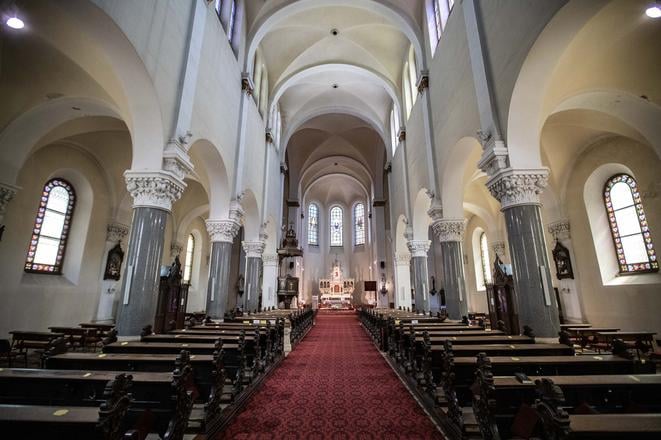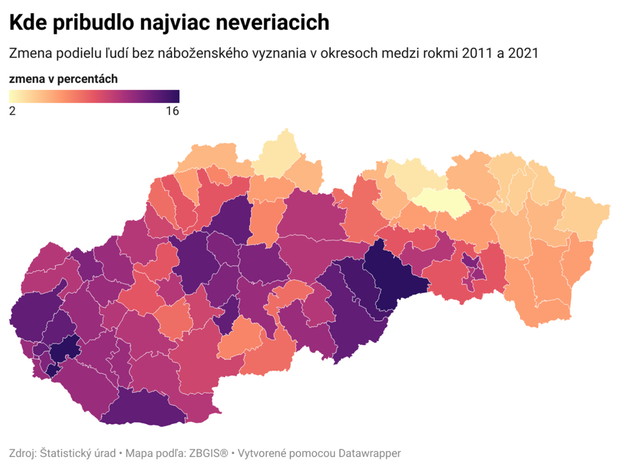When the 2011 census was taking place, pens and printed forms were still used. People routinely skipped questions, and it sometimes happened that parents filled out the form for their adult children.
Parents often ascribed to their children the same religious belief that they themselves professed. Sociologist Miroslav Tižík from the Slovak Academy of Sciences considers this to be one reason why the number of people who did not subscribe to any religious belief doubled in 2021, when more accurate electronic census-taking was used.
However, this was not the sole reason. Slovakia has not evaded the secularisation trend taking place throughout the Western world. More than half the population claims to belong to the Roman Catholic Church, and almost a quarter did not state any religious belief in the last census.
But in some regions, this ratio is already starting to change. For example, there are more people who do not profess any faith in Bratislava than Roman Catholics, Evangelicals and Greek Catholics combined.
And the Gemer region is similarly secular like Bratislava.
During socialism, mining regions - such as Gemer, south-east Slovakia - or heavily industrialised regions, were already undergoing faster secularisation. Yet human geographer Juraj Majo from Comenius University noticed that the strong secularisation in Gemer is not only taking place in the cities, but in the countryside. And this phenomenon started in the middle of the last century.
Apparently, the main reason is that there were evangelical strongholds in Gemer, and it was the evangelicals who during socialism deviated from their church faster than the Roman Catholics.
Tižík adds that the depopulation of this region has also had an impact on its secularisation. "People who were the core of collective religious life are leaving," he explains.


 Roman Catholics lose their faith when they grow up. (source: Archive of Sme)
Roman Catholics lose their faith when they grow up. (source: Archive of Sme)
 The map shows how the share of atheists changed between the years 2011 and 2021 in various parts of Slovakia. The stronger the colour the more significant the increase. (source: Sme/Datawrapper)
The map shows how the share of atheists changed between the years 2011 and 2021 in various parts of Slovakia. The stronger the colour the more significant the increase. (source: Sme/Datawrapper)